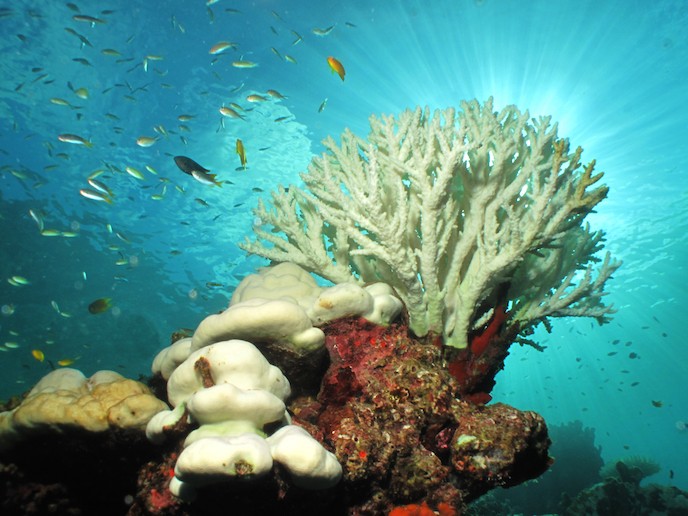A better understanding of stress responses in coral bleaching
Coral reefs rely on the symbiosis of microalgae with a calcifying animal, to build the reef infrastructure. However, climate change is now threatening coral reefs worldwide by causing a symbiotic dysfunction known as ‘coral bleaching’. While scientists know that bleaching is a species-specific and stressor-specific response, the underlying cellular and intercellular responses remain underexplored. It is known that nitric oxide (NO) and hydrogen peroxide (H2O2) are involved, but their sources, their interplay and dynamics had not been investigated in corals prior to the EU-supported DENOCS project. DENOCS was able, for the first time, to visualise stressor-specific NO production in an intact symbiosis using coral tissue cultures. The experiments showed that ‘typical’ coral bleaching-inducing stressors initiated NO production at the microalgae site. The team also showed that light stress alone could induce the same.
When symbiosis breaks down
Under environmental stress the symbiosis between the animal host (cnidarians, of the order Scleractinia) and the microalgae Symbiodiniaceae living within their tissues, breaks down. When the microalgae are either degraded or expelled, all that is then visible is the white, bleached looking coral skeleton underneath the almost transparent animal. If the stress conditions do not subside, the coral dies. High sea surface temperatures in conjunction with high light are the key stressors leading to coral bleaching. However, different species of microalgae can respond differently to stress, and some corals can modulate their resilience by exchanging their microalgal symbiont with a more stress tolerant species. DENOCS used bioimaging and micro-environmental sensing in corals under stress to investigate if the coral animal or the microalgae are the main producers of cellular radicals (H2O2 or NO) in the bleaching response. Using coral tissue cultures (from the coral Fungia fungites) subjected to thermal stress and high light under short-term (6 hours) and long-term (24 hours) incubations, the presence and location of NO within the symbiotic tissue arrangement could be mapped on a confocal microscope after addition of a NO-responsive fluorescence dye. The team also found that low oxygen conditions could stimulate the production of harmful cellular radicals such as NO. It was also found that different microalgal cultures (Symbiodinium microadriaticum and S. tridactnidorum) responded differently to NO stress. “When a coral hosts S. microadriaticum and the animal is releasing NO as a stress response to high temperature or light, the productivity of its microalgal symbiont will be lowered. This means that less energy will be transferred to the host compared to a coral harboring a less NO-sensitive microalgal symbiont,” Verena Schrameyer, the postdoctoral research fellow in DENOCS explains.
Coral reef management
Coral bleaching is repeatedly highlighted by researchers and the media as one of the most devastating consequences of climate change. The DENOCS project helps explain in more detail what is going on, and how some of these stress mechanisms are similar to those in higher animals. “By better understanding the nitrosative and oxidative stress responses in corals, DENOCS helps efforts to quantify threshold concentrations and likely impact sites for more effective interventions,” says Michael Kühl project coordinator. DENOCS’ technological advances could be used for further ecotoxicological work. The experimental techniques could, for example, be used for studies into how environmental pollutants like plastic leachates or other xenobiotics affect the production of cellular radicals and their critical thresholds for coral stress.
Keywords
DENOCS, coral, climate change, stressor, bleaching, biodiversity, ecosystem, nitric oxide, hydrogen peroxide, Scleractinia, symbiosis, Symbiodiniaceae, microalgae, bioimaging, sensors



